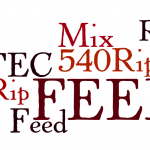“The text processor is transforming the way philosophy, poetry, literature, social science, history, and the classics are done as much as computerized calculation has transformed the physical sciences based on mathematics. The word processor is the calculator of the humanist … It would seem that not only the speed of intellectual work is being affected, but the quality of the work itself . . . Language can be edited, stored, manipulated, and rearranged in ways that make typewriters obsolete. Extensive sources of knowledge can be accessed electronically and incorporated into the planning and drafting of ideas. This new text management system amplifies the craft of writing in novel ways.” (Heim, 1987, pp. 1-2)
We read this quote in the Module 4 notes pertaining to the word processor being the “Calculator of the Humanist”. It’s pretty obvious to anyone familiar with how word processing works that it speeds up the work process if you have a basic grasp of keyboard layout. In a 1999 study of average computer users (Karat, Halverson, Horn & Karat) the average rate for transcription was 33 words per minute (wpm), and 19 wpm for composition. In the same study, when the group was divided into “fast”, “moderate”, and “slow” groups, the average speeds were 40 wpm, 35 wpm, and 23 wpm, respectively. Compare this to handwriting, where for an adult population the average speed of copying is 68 letters per minute (approximately 13 wpm) with the range from a minimum of 26 to a maximum of 113 letter per minute (which equate to approximately 5 to 20 wpm) (Bledsoe, 2011).
As an ex teacher of languages, I was always part of the school of thought that argued that word processing was BAD, that it was encouraging students to become sloppy with their spelling and grammar or made it easy for them to just “cut and paste” from the Internet and often times insisted that homework was handwritten and not word processed! I’ve since changed camps, and when designing curriculum do so in as innovative a way as possible, to incorporate applicable technologies to augment the learning process. And that’s exactly what I feel word processing does.
I recently read a study to support the argument against word processor doomsayers and instead augments the learning process. “Mistakes are a Fact of Life: A Comparative National Study”, by Andrea and Karen Lunsford (2008) is an interesting read. In their study, they concluded that the rate of student error was not increasing rapidly but had stayed stable for nearly one hundred years. Student errors were not more prevalent, only different. (For example, wrong word errors occurred more in frequency like “fanatic” instead of “frantic” seemingly the result of the spellchecker suggesting a word after the incorrect spelling.) Other important findings from the study showed trends in the length of papers becoming longer, changing from work based on personal narratives being replaced by an emphasis on argument and research, suggesting that student writers today are tackling the kind of issues that require inquiry and investigation as well as reflection. In light of this study and the fact that students are making as many errors as they have always made, is it right to blame the word processor for this? Should we actually expect more from our students that they ought to make less errors than before because they have the technology at their disposal to augment their writing and the learning process?
Heim (1987) asks the question whether or not “the conversion of twentieth-century culture to a new writing technology portend anything like the revolutionary changes brought about by the invention of the printing press and the widespread development of literacy”. Over the past couple of decades there has been a revolution in writing and educational technologies, whether or not it’s as significant as the one brought about by Johannes Gutenberg is something I’m still not sure I can answer …
References:
Bledsoe Jr., D. (2011). Handwriting speed in an adult population. Advance for Occupational Therapy Practitioners. 27(22), 10.
Karat, CM., Halverson, C., Horn, D., & Karat, J. (1999). Patterns of entry and correction in large vocabulary continuous speech recognition systems. Proceedings of the SIGCHI conference on Human Factors in Computing Systems (CHI ’99). New York, NY, US: ACM. pp. 568–575.
Lunsford, A.A. & Lunsford, K.A. (2008). Mistakes are a fact of life: A national comparative study. College Composition and Communication, 59(4), 781-806.




NathanLott
July 17, 2018 — 11:09 am
I think as you mentioned “augment the learning process” is the key piece we should draw from the widespread use of the word processor. What really fascinates me is the fact that so many teachers seem very caught up in how their students spell their words. There is still a vast majority of teachers in elementary that devote much of their time to ensuring their students are excellent spellers. I have no issues with making sure that spelling is a component of my class as without it it is difficult to read even the most creative work. However what really seems to be missing is the mastery of hypertext in education. How will students take this new multi modal medium and use it in a way that we can help grow their competencies within curriculum and content. How to write is a skill, as should be how to understand where hypertext can enhance and elevate your writing to levels where your message or story reaches new heights.
Looking for example at a writing exercise our school district performs every year. All students are required to write on a pre determined topic so teachers can assess and place them into a writing level. Form, content, spelling, grammar are all marked on a scale which leads the student to be placed in a particular category. Hypertext and the web 2.0 play no role in this exercise and really not even a voice has been raised to incorporate 21st century skills into this work. If they must write it why not have tracking markers on certain words when you run your phone over it an augmented 3D visual pops up that brings a new visual element into the story. Or could these writing exercises be done on computers and created in a program such as Inklewriter where students create a choose your own adventure type story. Better yet why not use Twine to have students show their knowledge of coding in html as the language of the machine will soon be a requirement for all future employment opportunities.
I enjoy a good piece of writing as much as any teacher but we are doing our students a huge disfavour if we are not weaving hypertext into these exercises. If you think about how our students converse to each other in class it certainly is not by passing notes anymore. Everything is done through social media and how are we preparing them for the future if the skills we are teaching them fall in the past are are no longer relevant when they leave our classrooms?
Kathryn Williams
July 20, 2018 — 3:40 am
Hello,
You’ve brought up many excellent point in this post – I really enjoyed reading it! And I’m pleased to hear that you’ve changed your thought process regarding word processors. It’s not always easy to change your mindset so I think it’s great that you have.
First off, your point about rate of error was interesting. The type of error has changed, but the amount of errors has remained relatively stable. I don’t think that we should expect students to produce error free writing simply because they are using a word processor. Is perfection what we’re striving for? That’s certainly not the message I give to my students, but instead, how do we learn from our mistakes? Maybe the skills we are teaching children need to shift. Spelling has always been a part of the elementary school curriculum, but are we teaching children strategies to recognise which word on spellcheck is the right one? I supposed the word processor is one more tool that students need to learn how to use.
I agree with you when you say that there has been a revolution in writing and educational technologies. I also agree with Nathan’s comment that the way we assess what good writing is hasn’t changed very much, at least not in my school! Like Nathan, we assess writing on content, spelling, and grammar, with no notion of hypertext or the web 2.0. Further, on the report cards at the end of year, we give the students a mark for presentation – how neatly their work is presented. Will a student’s neatness and printing matter in the future? Does it matter now? I suppose one argument could be how the presentation of work can sometimes be linked to the effort put into it. On the other hand though, there are just messy students who really struggle to write neatly. It’s very interesting to me that the skills we are often assessing in schools seem relatively behind the times. When will they catch up?
Thanks
Kathryn
steve campbell
July 21, 2018 — 6:40 am
Thank you for your thought-inspiring post. Funny enough, this post is a flashpoint for me as an example of what is wrong with this course. We spend a great deal of our time reading obsolete sources. There is important, authoritative and relevant source material that is much more recent than what we have been studying. Modules 1-3 had historic perspectives, so I can begrudgingly accept non-contemporary sources. Module 4, however, deals with current states so the obsolete reading material included is glaringly a waste of our time. Some content is useful, but a lot of module 4 readings are about outdated and obsolete concepts. The digital literacy landscape changes quickly and ‘contemporary’ viewpoints from twenty years ago, have little to bear on current concepts. Indeed, as modern students aware of the temporal urgency of contemporary viewpoints of technology, we should be aware and critical of outdated source material.
For example, the claim that the number of writing mistakes made by students in the last 100 years is outdated. In a 2015 study by Amos Glenn, he found that research on the effect of the word processor had been misguided, “Cheung (2012) places the blame for a literature filled with mixed results squarely on the poor methods too often employed by researchers studying the effects of word processors on writing quality.” (Glen, “The relationships of word processing in academic work…”, 2015, p. 18). All our reading material about word processing is based on outdated and poor research. Glen’s research shows that usage of word processors has a positive effect on academic writing and that teaching students how to use word processing tools improves students’ writing (Glen, p. 123).
This is just one example of excellent contemporary research that is readily available, which subverts or rejects concepts taught in this course. Why is this course so out of date? Is it the fault of the institution or the students?
References
Glenn, A. (2015). The relationships of word processing in academic work and student achievement scores on the national assessment of educational progress